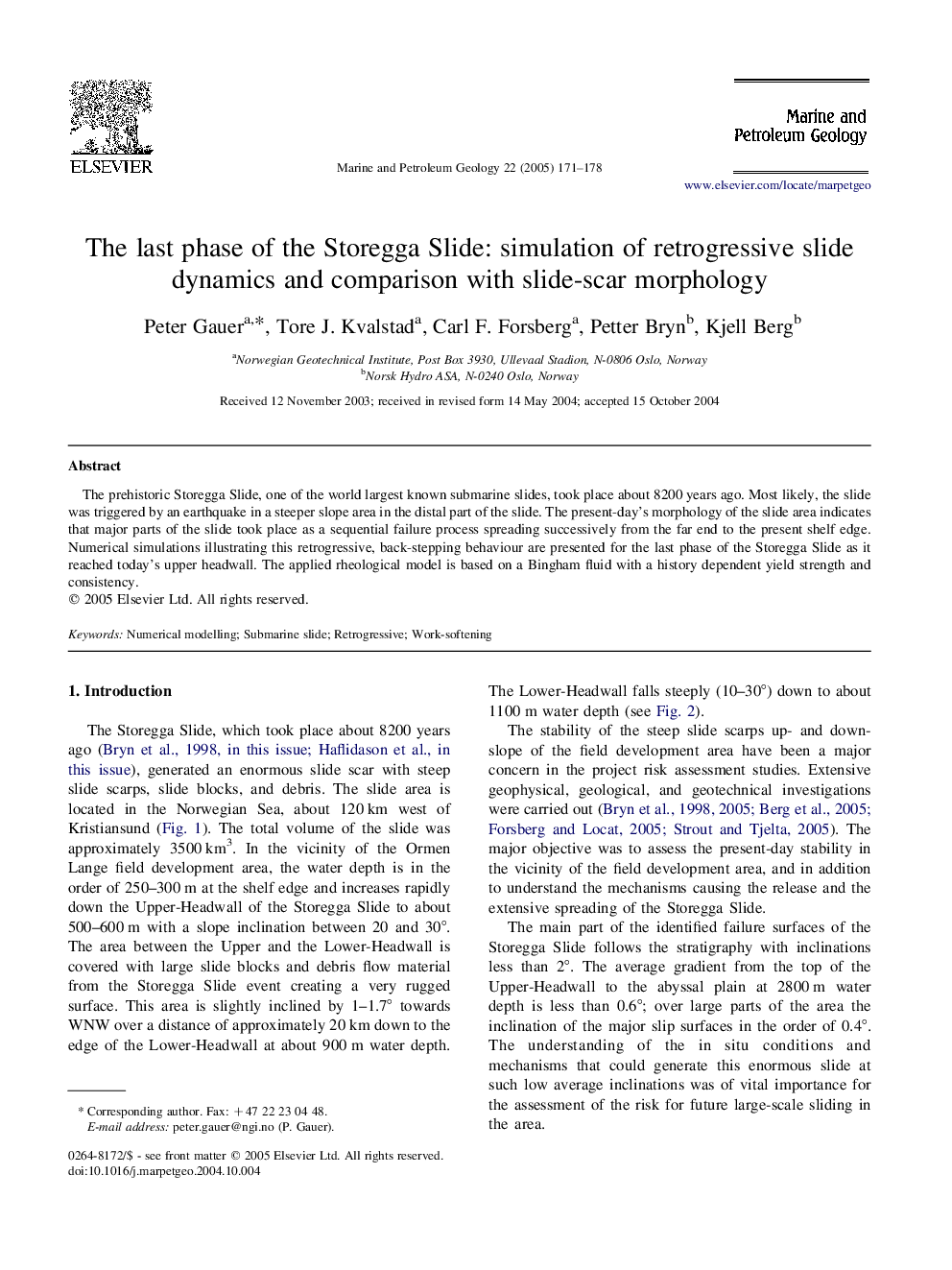| Article ID | Journal | Published Year | Pages | File Type |
|---|---|---|---|---|
| 9528459 | Marine and Petroleum Geology | 2005 | 8 Pages |
Abstract
The prehistoric Storegga Slide, one of the world largest known submarine slides, took place about 8200 years ago. Most likely, the slide was triggered by an earthquake in a steeper slope area in the distal part of the slide. The present-day's morphology of the slide area indicates that major parts of the slide took place as a sequential failure process spreading successively from the far end to the present shelf edge. Numerical simulations illustrating this retrogressive, back-stepping behaviour are presented for the last phase of the Storegga Slide as it reached today's upper headwall. The applied rheological model is based on a Bingham fluid with a history dependent yield strength and consistency.
Related Topics
Physical Sciences and Engineering
Earth and Planetary Sciences
Economic Geology
Authors
Peter Gauer, Tore J. Kvalstad, Carl F. Forsberg, Petter Bryn, Kjell Berg,
